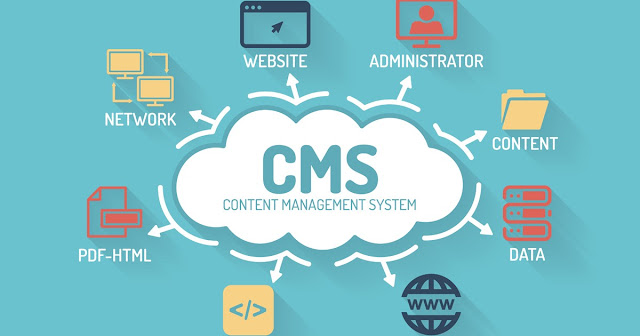CRITERIA FOR CHOOSING A CONTENT MANAGEMENT SYSTEM
So-called content management systems make it easier for non-programmers to maintain websites and manage the content without having to use a programming language. If you have made the decision to integrate a CMS on your website, you will soon be faced with an overwhelming number of CMS providers. In addition to the market leaders such as TYPO3 or WordPress, there are other smaller, well-known providers including Drupal, Joomla! Or ProcessWire. In addition, there are countless small but less well-known providers of CMS. Smaller doesn't mean worse. The CMS solution that best suits your problem could also be among the hidden players.
CMS evaluation checklist: Find a suitable CMS through requirements analysis
The integration of a CMS is a
medium to long-term decision and the selection of the right system should
therefore be carefully considered. In order to find the right CMS for your
company and your website, you first have to set up and carry out a thorough
requirements analysis.
The following checklists are intended to provide guidelines for selecting
the right content management system.
Strategy: From the corporate strategy to the main requirements of the CMS
·
In principle, the main
requirements for the CMS should be derived from the corporate strategy. The
following points should be observed:
·
Which goal should be
achieved with the implementation of CMS?
·
What kind of content do you
want to manage?
·
In what time frames should
content be added or edited?
·
Which menu items should be
available?
·
Who are the end users of
the website?
·
Functionality: Requirements
for the functions of the CMS
Another point that should not be
neglected is functionality. The optimal content management system should be
perfectly tailored to the needs of the company and support everyday work. Here
are some important selection criteria:
·
How many users can be
created?
·
How many users can work at
the same time?
·
Can users access one page
at the same time?
·
Which media formats can be
managed?
·
Can several clients be
managed in one CMS?
·
How easy is it to create
new clients?
·
What project size is the
CMS suitable for?
·
Can functions be easily
integrated into the system?
·
Can complex pages be
clearly managed?
·
Which roles and rights can
be assigned?
·
Does the CMS support
personalization?
·
Is multi-channel management
possible with the CMS?
·
Is content from the CMS
transmitted responsively?
Stakeholder analysis: From the needs of the user to the optimal website
It is also important to determine
who the website will be aimed at and who will work with it in order to be able
to use the CMS to adapt the content and structure of the website perfectly to
the various needs. The following questions have to be answered:
·
Who will use the website?
·
What is the goal of users
who come to the website?
·
Which end devices are the
main devices used to access the website? (supports the CMS responsive design)
·
What is the company's goal
when users come to the website?
·
Who will work with the
website?
Multilingualism: CMS language support for international web projects
Language plays an important role,
especially in global companies, and should be taken into account when choosing
the CMS. CMS also a part of the SEO Services in Lahore
for the best services. On the one hand, the website should be accessible in
different languages and, on the other hand, it is important for employees
from abroad that the system can also be used in several languages.
·
How can multilingual pages
be maintained in the CMS?
·
Can the backend user view be
used in different languages?
Profitability: From the cost of creating the CMS to the support and
maintenance costs
A particularly important point,
which is usually also decisive, is the cost. However, cost calculations should
be carried out over longer periods of time so that support and maintenance
costs can also be included. The license-free open source systems are not always
the most economical.
·
How high are the license
costs?
·
How high are maintenance
and support costs?
·
How high are possible
follow-up costs?
Implementation: From the CMS
implementation to the provision of the content management system
In addition to
the costs, the initial implementation effort must also be taken into account.
·
How high is the initial
implementation effort?
·
Are the human resources
available?
·
Is the necessary know-how
available?
Conclusion: selection of the suitable content management system
A good content management system
enables easy administration and maintenance of the website content. From a
future-oriented point of view, it is also important to ensure that the system
can be updated over a longer period of time and that plug-ins can be installed.
In the end it has to be said that
there are many good and not the only true content management system. It always
depends on the type of company and the respective requirements which one is
optimal.




Comments
Post a Comment